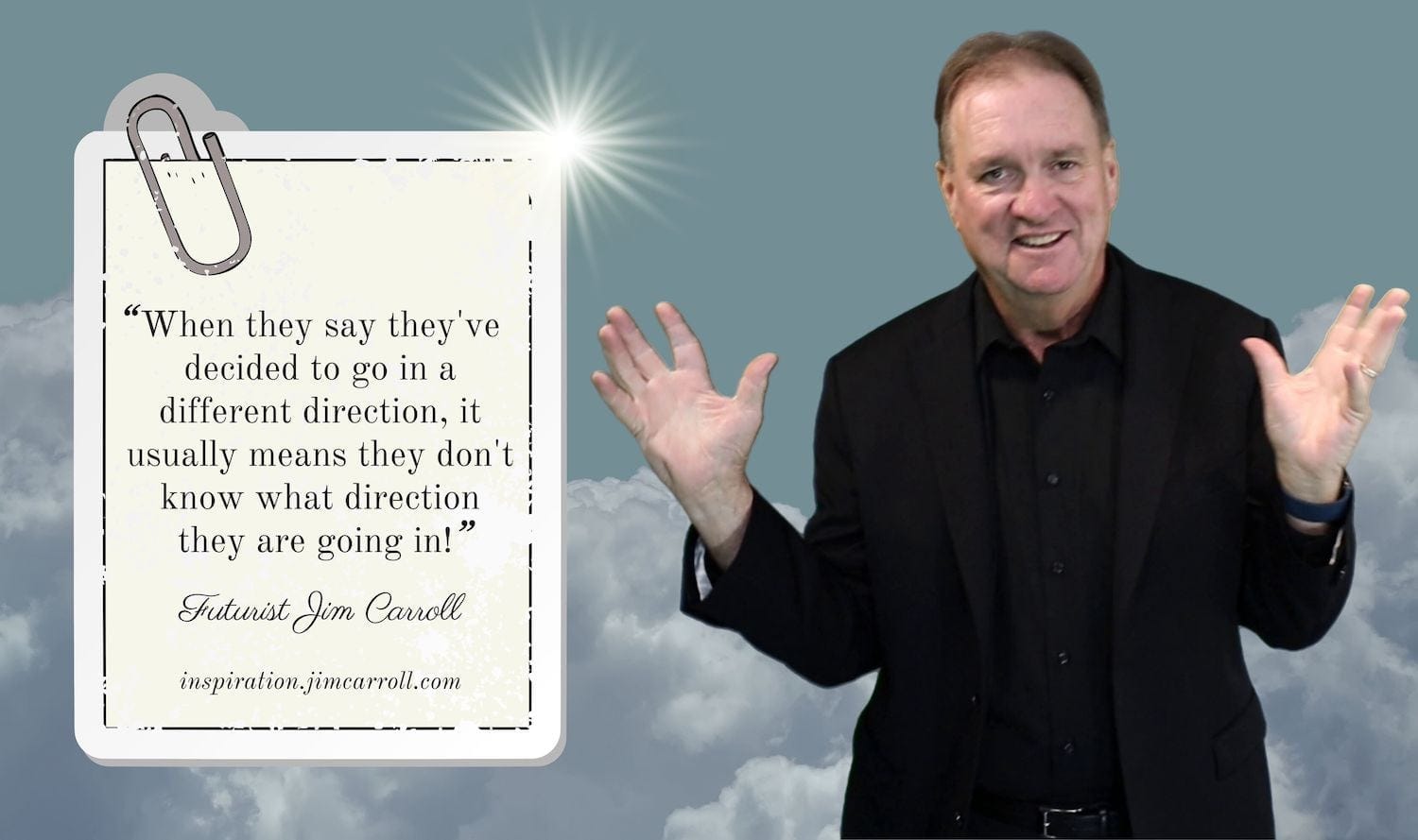It's the phrase that EVERYONE hates to hear. And it's the phrase that EVERYONE uses!
What's behind the phrase? Often, a lack of certainty, an inability to make decisions, and in essence, organizational dysfunction. Think about it - often certainty is your best weapon - and yet at the same time, it is in short supply. And so you resort to the easy way out when sharing decisions with those who are impacted, and hide behind this trite phrase.
And how do I know you are running with a shortage of certainty? Because I bet you have recently used the variation of the phrase that potential employees, consultants, and even speakers hate to hear: "We've decided to go in a different direction."

For the potential employee - who might have been through multiple interviews - hearing this phrase is often the cruelest part of the process of rejection: there is absolutely zero feedback within the phrase, and it helps to fuel a feeling of anger, hurt, bewilderment, and a loss of confidence. And yet everyone knows what is really behind it. indecision. And indecision is not a decision - it's a sign of leadership dysfunction!
When I'm examining my clients for the challenges they might be faced with innovation and disruption, one of the first things I look for is signs of uncertainty, Often, I will see it right within the booking process; someone has been charged with responsibility for finding someone to open up there leadership meeting with a message about the future, disruption, creativity, and innovation. Yet I can immediately tell that the organization has significant barriers within its very soul when that very same person must go off and seek multiple levels of approval from multiple different levels of the organization!
How can they ever succeed at innovation if they can't make a simple decision and stick with it? How can the organization move forward if it seems readily apparent that any decision - even the most trivial - needs massive consensus simply to decide to get going? Organizations that succeed at innovation have a bias for action, a culture of certainty, a mindset of movement, and a focus on going forward. They don't allow themselves to be drowned in the organizational sclerosis of aggressive indecision - they refuse to become trapped in bureaucracy, stuck in the land of indecisiveness.
What happens to organizations that can't make decisions? They fall prey to several key failures in that they:
- have the inability to generate fresh ideas
- spend too much time spent searching for the perfect idea
- spend too much time trying to find an idea that everyone can agree on
- have too much resistance to new ideas
- they build barriers that halt any action, due to fear of change or criticism
- don't have a system for creative suggestions
- are bound by rigid rules or policies that stifle experimentation or risk-taking
- spend insufficient time, resources, or support for innovative idea generation
- have no clear process or strategy for generating, evaluating, or implementing ideas
- have the inability to adapt to changing environments or competitors
What do you do about this?
- encourage a culture of openness and curiosity
- welcome and value new ideas
- provide regular feedback and recognition for those who are able to make creative contributions
- celebrate BOTH success and failure as learning opportunities
- give employees the flexibility to explore different approaches and solutions
- allocate sufficient time, resources, and support for innovation activities, and reward innovation efforts and outcomes
- establish both a clear process or strategy, as well as offbeat methodologies, for generating new ideas
Above all, stop making excuses - make decisions. Build a mindset of certainty into your day and stop taking the easy way out - because bold ideas demand decisive certainty!
Futurist Jim Carroll makes decisions every single day based on certainty. Try it - you might like it!
Thank you for reading Jim Carroll's Daily Inspiration. This post is public so feel free to share it.

